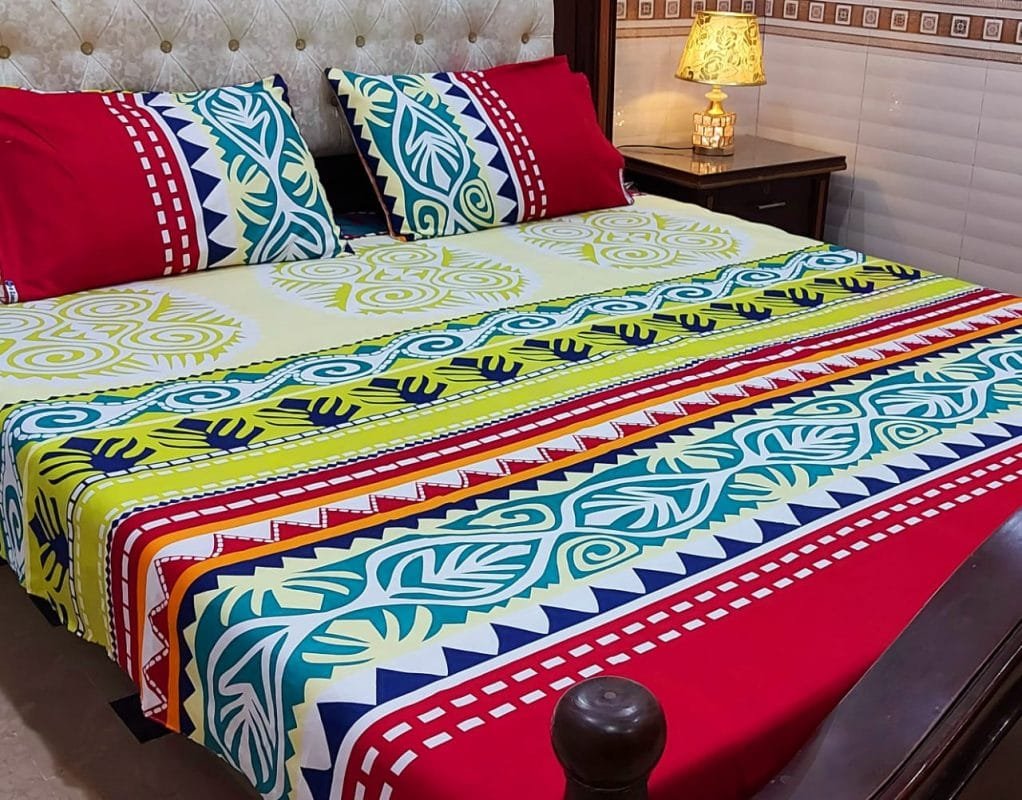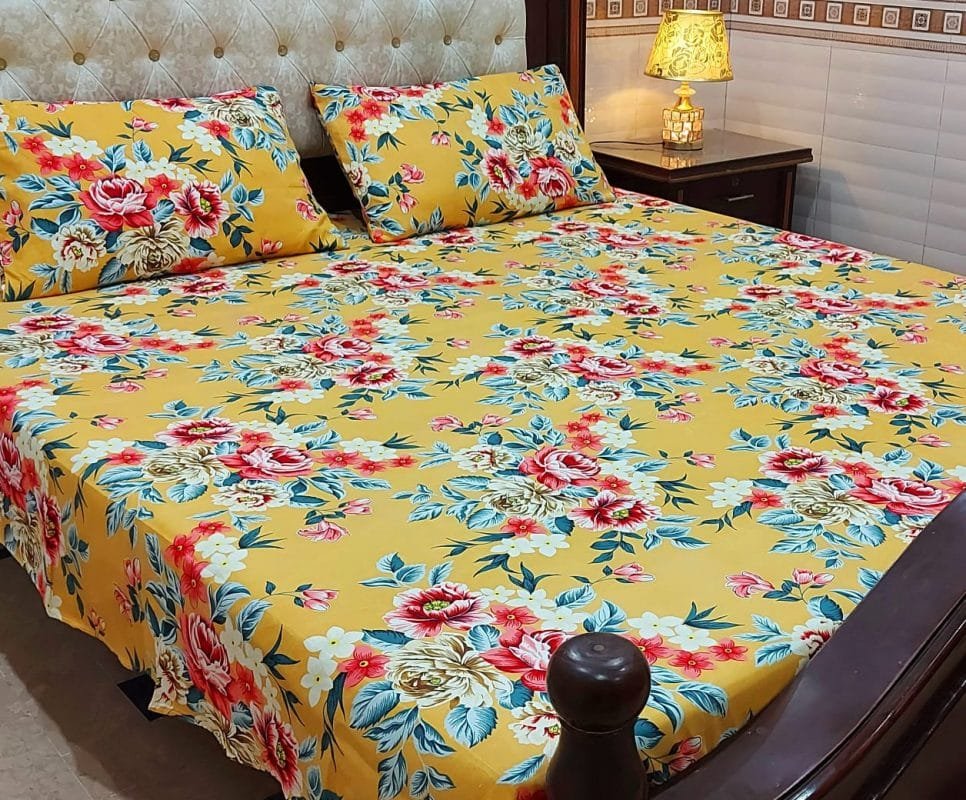No products in the cart.
Blogs
Bedsheet: The Ultimate Guide to Choosing the Perfect Bedding
Introduction to Bedsheets
When it comes to creating a comfortable and inviting bedroom, choosing the right bedsheet is crucial. A well-selected bedsheet can enhance your sleep experience, add style to your bedroom decor, and provide a cozy sanctuary at the end of a long day. In this comprehensive guide, we will explore everything you need to know about bedsheets, from different materials and thread counts to maintenance tips and popular trends. So, whether you’re a seasoned bedsheet connoisseur or a novice in the world of bedding, this article will help you make an informed decision to ensure a good night’s sleep.

Factors to Consider When Choosing Bedsheet
Thread Count: Quality vs. Quantity
One of the most important factors to consider when selecting bedsheets is the thread count. Thread count refers to the number of horizontal and vertical threads per square inch of fabric. Many people believe that a higher thread count automatically translates to better quality, but that’s not always the case.
While a higher thread count can indicate a softer and more durable fabric, it’s essential to strike a balance between quality and quantity. Sheets with an excessively high thread count may feel heavy and less breathable. Opt for a thread count ranging from 200 to 800 for a comfortable and long-lasting bedsheet.

Material Matters: Exploring Different Fabrics
The material of the bedsheets plays a significant role in their comfort, breathability, and durability. Here are some popular bedsheet materials to consider:
1. Cotton: The Timeless Classic
Cotton bedsheets are the go-to choice for many individuals due to their softness, breathability, and versatility. Egyptian cotton and Pima cotton are renowned for their superior quality and luxurious feel. Cotton bedsheets are also hypoallergenic, making them suitable for people with sensitive skin or allergies.
2. Linen: The Breathable Beauty
Linen bedsheets are ideal for those seeking a naturally cool and breathable option. Linen fabric is highly absorbent and wicks away moisture, making it perfect for hot sleepers or warmer climates. Additionally, linen sheets develop a charming, slightly wrinkled look over time, adding a touch of effortless elegance to your bedroom.
3. Silk: The Ultimate in Luxury
If you’re looking to indulge in the lap of luxury, silk bedsheets are the epitome of opulence. Silk is incredibly soft, hypoallergenic, and temperature-regulating, providing a sumptuous sleeping experience. However, silk requires delicate care and may not be as durable as other materials.
4. Microfiber: The Budget-Friendly Alternative
Microfiber bedsheets offer a cost-effective solution without compromising on comfort. They are made from synthetic fibers that mimic the feel of natural fabrics like cotton. Microfiber sheets are often wrinkle-resistant, durable, and easy to maintain. However, they may not be as breathable as natural materials.

Weave Types: Understanding the Texture of Bedsheet
The weave type of a bedsheet affects its texture, appearance, and overall feel. Let’s explore some common weave types:
1. Percale: Crisp and Cool
Percale weave creates a lightweight, crisp, and cool fabric. It features a simple one-over-one-under pattern, resulting in a matte finish with a smooth touch. Percale sheets are known for their breathability and durability, making them an excellent choice for hot sleepers or warmer climates.
2. Sateen: Smooth and Lustrous
Sateen weave produces a smooth, lustrous fabric with a subtle sheen. It has a four-over-one-under pattern, giving it a silky and luxurious feel. Sateen sheets are often thicker and warmer than percale sheets, making them suitable for colder seasons or those who prefer a softer touch.
3. Twill: Durable and Wrinkle-Resistant
Twill weave creates a diagonal pattern on the fabric’s surface, resulting in a strong and durable bedsheet. Twill sheets are less prone to wrinkles and provide a crisp yet cozy feel. They are an excellent choice for those seeking long-lasting bedding that can withstand frequent use and washing.

Color and Design: Personalizing Your Bedroom
The color and design of your bedsheets can transform the ambiance of your bedroom. Whether you prefer solid hues, intricate patterns, or playful prints, there is a vast array of options to suit your style. Consider the existing color scheme and decor of your bedroom to create a cohesive and visually appealing space.
Remember, lighter-colored bedsheets tend to show stains more easily, while darker shades can create a cozy and intimate atmosphere. Additionally, consider the thread count and material’s impact on color retention to ensure your bedsheets stay vibrant after numerous washes.
FAQ’s about Bedsheet
1. How often should I change my bedsheet?
It is recommended to change your bedsheets every one to two weeks. However, if you sweat excessively during sleep, have allergies, or simply prefer a fresh and clean bed, changing them more frequently is advisable.
2. Can I mix and match different Bedsheet sets?
Yes, mixing and matching different bedding sets can add depth and personality to your bedroom decor. You can experiment with coordinating or contrasting colors, patterns, and textures to create a unique and visually pleasing arrangement.
3. How do I care for my bedsheet?
To ensure the longevity of your bedsheets, follow these care instructions:
- Wash them separately in cold water with a mild detergent.
- Avoid using bleach, as it can weaken the fabric fibers.
- Tumble dry on low heat or hang them to air dry.
- Iron or steam them on a low setting, if desired.
4. Are there any eco-friendly options for bedsheet?
Yes, several eco-friendly options are available for bedsheets. Look for certifications such as organic cotton, Fair Trade, or Global Organic Textile Standard (GOTS) to ensure the sheets are sustainably produced and free from harmful chemicals.
5. How can I prevent wrinkles in my bedsheet?
To minimize wrinkles, promptly remove your bedsheets from the dryer and fold or put them on the bed immediately. If wrinkles do appear, a quick touch-up with a steamer or iron can restore their smooth appearance.
6. Can bedsheet affect my sleep quality?
Absolutely! The right bedsheets can significantly impact your sleep quality. Opting for breathable materials, such as cotton or linen, can help regulate your body temperature and promote a more restful sleep. Additionally, choosing sheets with a comfortable texture and color scheme can contribute to a soothing environment.

Conclusion
Selecting the perfect bedsheet is a personal journey that involves considering various factors such as thread count, material, weave type, color, and design. By understanding these elements and taking your preferences and needs into account, you can find a bedsheet that not only enhances your bedroom aesthetics but also provides a comfortable and inviting sleep haven. Remember to follow proper care instructions to ensure the longevity of your bedsheets and enjoy a restful slumber night after night.
For more designs, here is our Daraz Shop:


